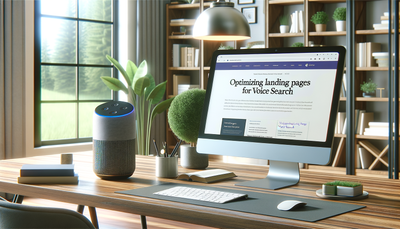The Impact of Page Speed on Landing Page Conversions
In the digital age, where attention spans are shorter than ever, the speed at which your landing page loads can make or break your conversion rates. This article delves into the crucial relationship between page speed and landing page conversions, highlighting why a fast-loading page is essential for success. We'll explore various techniques for optimizing your landing page speed, from image compression to minimizing HTTP requests. Additionally, we'll discuss how to measure the impact of these optimizations on your overall performance. By understanding and implementing these strategies, you can significantly improve your landing page's effectiveness and boost your conversion rates.Table of Contents:

The Correlation Between Page Speed and Conversion Rates
Studies have consistently shown a strong correlation between page speed and conversion rates. A mere one-second delay in page load time can result in a 7% reduction in conversions. This relationship is even more pronounced on mobile devices, where users expect near-instant loading times. Slow-loading pages not only frustrate visitors but also signal unprofessionalism, potentially damaging your brand's reputation.Moreover, search engines like Google consider page speed as a ranking factor, meaning faster pages are more likely to appear higher in search results. This increased visibility can lead to more organic traffic and, consequently, more potential conversions. By prioritizing page speed, you're not only improving user experience but also enhancing your search engine optimization efforts.
Do you need a website? Want to build a website but don't know where to start? Our website builder is the perfect solution. Easy to use, and with the ability to customize to fit your business needs, you can have a professional website in no time.
Key Factors Affecting Landing Page Speed
Several factors can impact your landing page's loading speed. Large, unoptimized images are often the primary culprit, as they require significant bandwidth to load. Excessive HTTP requests, caused by numerous scripts, stylesheets, and third-party plugins, can also slow down your page.Server response time plays a crucial role in page speed. A slow server will delay the delivery of your page's content, regardless of how well-optimized it is. Additionally, the use of render-blocking JavaScript and CSS in above-the-fold content can significantly increase the time it takes for a page to become interactive. Understanding these factors is the first step towards effectively optimizing your landing page speed.
Image Optimization Techniques
Images often constitute the largest portion of a page's total size. Implementing proper image optimization techniques can dramatically improve your page load times. Start by choosing the right file format: JPEG for photographs, PNG for images with transparency, and SVG for logos and icons.Compress your images without sacrificing quality using tools like TinyPNG or ImageOptim. Implement lazy loading, which defers the loading of off-screen images until the user scrolls to them. Consider using next-gen formats like WebP, which offer superior compression and quality characteristics. Finally, ensure you're serving appropriately sized images for different devices and screen resolutions using responsive images techniques.
Building a website with SITE123 is easy
Minimizing HTTP Requests
Each element on your page, from images to scripts, requires a separate HTTP request. Reducing the number of these requests can significantly speed up your page load time. Start by combining multiple CSS files into one and doing the same for your JavaScript files. Use CSS sprites to combine multiple images into a single file, reducing the number of image requests.Implement icon fonts or SVG icons instead of individual image files for icons. Consider inlining critical CSS directly in your HTML to reduce render-blocking requests. Evaluate your use of third-party scripts and plugins, removing any that aren't essential to your landing page's functionality. By minimizing HTTP requests, you can dramatically improve your page's loading speed and, consequently, your conversion rates.
Leveraging Browser Caching
Browser caching allows you to temporarily store some data on a visitor's device, so they don't have to wait for it to load every time they visit your page. This can significantly improve page load times for returning visitors. Implement browser caching by setting expiry dates for certain types of files in your HTTP headers.Static resources that don't change often, such as logos and CSS files, can be cached for longer periods. Dynamic content should have shorter cache durations or no caching at all. By effectively leveraging browser caching, you can create a smoother, faster experience for your returning visitors, potentially increasing their likelihood of converting.
Optimizing Server Response Time
Your server response time directly impacts how quickly your landing page loads. Start by choosing a high-quality hosting solution that can handle your traffic volume efficiently. Consider using a Content Delivery Network (CDN) to distribute your content across multiple, geographically diverse servers, reducing latency for users far from your primary server.Optimize your server-side code, ensuring database queries are efficient and using caching where appropriate. If you're using a Content Management System (CMS), keep it and all plugins updated to the latest versions for optimal performance. Regularly monitor your server response time and work with your hosting provider to address any issues promptly.
Measuring the Impact of Speed Optimizations
To truly understand the impact of your speed optimizations on conversions, it's crucial to measure and analyze your results. Start by establishing baseline metrics for your page load time and conversion rates before implementing any changes. Tools like Google PageSpeed Insights, GTmetrix, and WebPageTest can provide detailed information about your page's performance.Implement changes incrementally and measure their impact on both page speed and conversion rates. Use A/B testing to compare the performance of optimized pages against their original versions. Monitor your bounce rates, as they often correlate with page speed issues. By consistently measuring and analyzing your results, you can fine-tune your optimization efforts for maximum impact on your conversion rates.





